The End of Plastic Pollution?
Earth Day 2018 marked its 47th anniversary on April 22 and the organization has declared this year’s theme as ‘Help end plastic pollution’.
It’s unimaginable to think how our lives would be without plastic. Plastics are so ubiquitous that we completely rely on its convenience, comfort, safety, low cost, and the multiple uses in thousands of products in our daily lives.
Flexible, resilient, lightweight, and strong, approximately a third of plastic used today is in packaging. Roughly the same amount is used in building materials such as plumbing, piping, carpeting, and vinyl. Other uses of plastic include automobiles, furniture, toys, and lifesaving medical supplies and devices. The plastics used in bottles and wrappers allow us to take food and drinks with us anywhere.
In a nutshell, plastics are indispensable and are widely used in our homes, offices, and industry every day.
But where does all this plastic eventually end up?
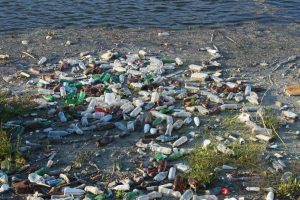 Some of it can be recycled. Quite a bit ends up in the trash and landfills. And more than you can imagine ends up loose as plastic pollution, eventually making its way into our waterways. There are millions of tons of debris floating around in the water—and most of it is plastic. It is estimated that up to 80% of marine trash and plastic actually originates on land—either swept in from the coastline or carried to rivers from the streets during heavy rain via storm drains and sewer overflows.
Some of it can be recycled. Quite a bit ends up in the trash and landfills. And more than you can imagine ends up loose as plastic pollution, eventually making its way into our waterways. There are millions of tons of debris floating around in the water—and most of it is plastic. It is estimated that up to 80% of marine trash and plastic actually originates on land—either swept in from the coastline or carried to rivers from the streets during heavy rain via storm drains and sewer overflows.
Therein lies the Earth Day challenge to help end plastic pollution.
Plastic, because it’s nonbiodegradable, can be around for up to 1,000 years or possibly even indefinitely, as compared to other forms of trash. Different kinds of plastic degrade at different times, but the average time for a plastic bottle to completely biodegrade is at least 450 years.
Consider the lifespan of these typical plastic products before they naturally biodegrade:
- Plastic water bottle – 450 years
- Disposable diapers – 500 years
- Six pack plastic rings – 600 years
- Styrofoam cups – 50 years
- Plastic grocery bags – 10 to 20 years
- Extruded polystyrene foam – over 5,000 years!
Our lives without plastic use is not going away anytime soon. But there are many small (although important) things we can do right now to protect our waterways and help end plastic pollution. The most obvious is to try to keep as much plastic as possible out of the waste stream in the first place.
These simple behavioral changes can have an impact:
Stop buying bottled water
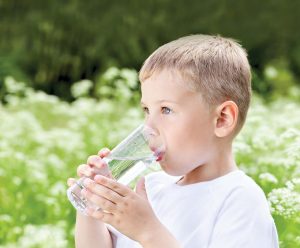 Drink from reusable containers and fill with tap water. Consider that close to 50 billion plastic bottles are tossed in the trash each year and only 23% are recycled!1 If that isn’t’ enough to convince you to stop buying ‘disposable’ water bottles, a recent study by ORB Media, did testing of 259 plastic water bottles from nine counties that revealed microplastic particles in the water from 242 of the bottles.
Drink from reusable containers and fill with tap water. Consider that close to 50 billion plastic bottles are tossed in the trash each year and only 23% are recycled!1 If that isn’t’ enough to convince you to stop buying ‘disposable’ water bottles, a recent study by ORB Media, did testing of 259 plastic water bottles from nine counties that revealed microplastic particles in the water from 242 of the bottles.
Recycle more
Recycling seems obvious, but we can do so much better! According to The National Geographic, an astounding 91% of plastic is not recycled.3
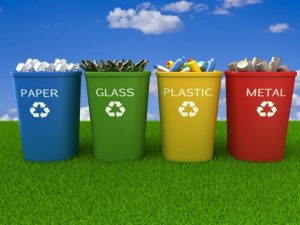
The benefits of recycling is equally astounding. Not only does recycling reduce the amount of waste sent to landfills and incinerators, but it prevents (air and water) pollution, saves energy and money, creates jobs, and has a tremendous positive impact on the environment.1
To find our more on the specifics of recycling in your area, check out Earth911.org’s recycling directory.
Stop using disposable plastics
Ninety percent of disposable plastic in our daily lives are used once and then thrown out—grocery bags, food wrappers, plastic wrap, disposable cutlery, straws, coffee-cup lids, etc. In the United States alone, approximately 102.1 billion plastic bags are used every year.2 Start reducing waste by bringing your own bags to the store, silverware to the office, or travel mug to Starbucks.
Buy in bulk
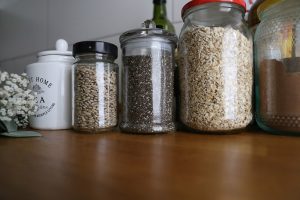
Single-serving yogurts, travel-size toiletries, packages of snack food—all these items of convenience not only cost more but produce more trash than purchasing larger containers. Consider buying in bulk and in larger packages, then portioning out into smaller reusable containers.
Switch from disposable diapers to cloth
The EPA estimates that 7.6 billion pounds of disposable diapers are discarded in the US each year. 1 Use cloth diapers to reduce your baby’s carbon footprint and save money.
Cook more and pack your lunch
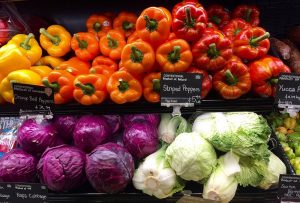 Not only healthier for you, cooking at home helps reduce the endless surplus of plastic packaging – take out containers, food wrappers, bottles, and eating utensils. Choose fresh fruits and veggies and bulk items with less packaging…and pack your leftovers or lunch in reusable containers and bags.
Not only healthier for you, cooking at home helps reduce the endless surplus of plastic packaging – take out containers, food wrappers, bottles, and eating utensils. Choose fresh fruits and veggies and bulk items with less packaging…and pack your leftovers or lunch in reusable containers and bags.
People around the world will celebrate Earth Day April 22. However, the challenge to help end plastic pollution can’t be a one-day event. Rather, we should strive to create a culture of environmental stewardship and make significant changes in our daily lives to reduce, recycle, and reuse our dependency on plastic.
We can start today!
